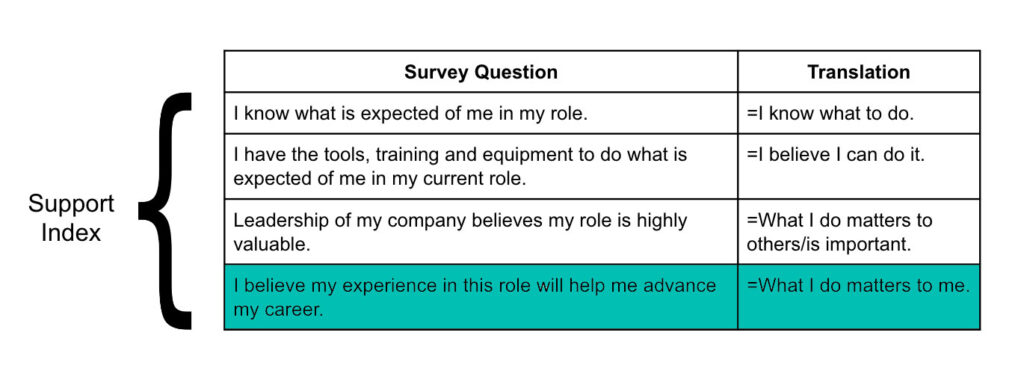Research consistently shows that people who are intrinsically motivated by their jobs often perform better — and feel better — at work.
Intrinsic motivation is our internal drive that goes beyond external rewards. It’s fueled by personal interests and values. When we’re genuinely motivated by the tasks and responsibilities of our jobs, we’re usually more engaged, focused, and willing to go the extra mile (or kilometer, depending on where you live).
In contrast, when we struggle to find purpose and meaning in our jobs, disengagement, burnout, and underperformance aren’t far behind.
Few roles within a B2B revenue team require more tenacity and resilience than Business Development Representatives (BDRs). They work under intense pressure to generate new business opportunities and meet targets within a fast-paced, highly competitive environment.
As BDRs are typically in the nascent stages of their career, they may lack the confidence that more experienced professionals have cultivated over time. During periods when achieving goals is especially challenging, BDRs perform better when they have a sense of purpose and a clear understanding of how their current work fits into their personal professional goals.
Without this deeper internal drive, these young professionals are at an elevated risk of burnout. Engaged and motivated BDRs are essential to not only drive individual performance, but to also foster a sense of shared purpose among teams, resulting in increased productivity and success for the entire organization.
We recently conducted a survey among 500 BDRs to determine how intrinsic motivation impacts their daily performance. We were also interested to see how it might impact their career path.
While the results confirm existing research (i.e., BDRs who have higher intrinsic motivation tend to perform better than those with less), the findings were more nuanced and surprising in one respect.
Specifically, our study uncovered that the impact of a BDR’s intangible, internal drive outweighs some of the more observable resources commonly thought to be key to success in the field (such as investments in tools, technologies, etc.).
Let’s take a closer look.
The Study
Earlier this year, we surveyed 500 BDRs to learn about their job processes, outcomes, and how supported they felt in their roles. (You’ll find the complete discussion in our 2023 State of the BDR Report).
To help quantify this, we used what we call the Support Index, or a composite score that includes respondents’ answers to four distinct aspects of job support. (See the chart below for a full description.)
Within this Support Index is a measure of the BDRs’ intrinsic motivation, calculated by how much they agreed with the statement: “I believe my experience in this role will help me advance my career.”
The Support Index Explained

Across all four dimensions of perceived support seen in the chart above, our measure of intrinsic motivation had the largest individual impact on BDR’s quota attainment. This outsized impact was noteworthy given the expected impact to more observable job processes. Specifically:
Booking Meetings
Scheduling the first contact between prospects and salespeople is best practice, as opposed to simply relying on future promises. We asked BDRs if they did this and assessed its impact on their performance.
Outbound Versus Inbound Prospecting
Outbound and inbound prospecting each have their own unique challenges. We asked BDRs which type of prospecting they did and quantified its impact on their performance.
Time Spent In Prospect Conversations
We asked BDRs how much time they spend speaking with prospects and tested how it affects their job performance.
Despite the positive impact the above processes had on BDR performance, intrinsic motivation continued to have the largest impact of all.
Quantifying Intrinsic Motivation
On its own, intrinsic motivation accounts for 4% of the reason some BDRs make their quota and others don’t.
While 4% may seem like a small percentage, it’s quite the opposite when we put it within the context of individual performance. Consider a competitive swimmer who makes it to the finish line merely milliseconds before her competitor. This millisecond may seem negligible on its own, but it’s everything in the context of that swimmer’s race.
Similarly, statistically speaking, 4% of why some BDRs make their quota and others don’t is huge. It’s often the difference between making or not making quota. And, as we will discuss below, it is within the power of BDR leaders to foster.
Better, Together
When the four items from the Support Index (seen in the chart above) and the three job processes (also listed above) are considered together, they account for nearly 10% of the reason some BDRs make their quota and others don’t, with intrinsic motivation being the largest individual driver (i.e., it accounts for nearly half of this whole 10% effect).
While intrinsic motivation has the most significant impact on BDR quota attainment, our discovery doesn’t mean that the other factors mentioned don’t contribute to BDR success.
Doing well on all of these elements combined is more powerful than any one element on its own. For instance, if BDRs don’t…
- Understand their job expectations
- Have necessary resources to perform, and
- Perceive their role as valuable to the business
…chances are they won’t stay in the role for long. Similarly, spending time contacting prospects is an essential part of the job and scheduling the first contact between prospects and salespeople is a best practice. Together, these factors collectively drive success for BDRs.
Purpose & Performance: Elevating the BDR Role with Strategic Leadership
With intrinsic motivation proving to have a significant impact on individual contributors, let this research serve as another clear indication that finding a higher meaning, or purpose, in our work is a vital component toward our professional success.
And it’s not only potent in the context of individual performance. When an entire BDR team is overwhelmingly composed of individuals who are intrinsically motivated, the potential for success becomes practically limitless.
With motivated BDRs, revenue teams stand to gain a force multiplier effect, resulting in increased productivity and — ultimately — more deals closed.
While BDRs’ jobs aren’t necessarily changing the world, they should be tied to changing at least a small part of their own. This sense of purpose should be personally meaningful to them and their unique values or aspirations.
So how can BDR leaders empower their teams to develop this intense sense of purpose within their organizations? Here are some tips.
Proper Job Fit
BDR leaders can make an impact from the get-go by ensuring job fit in the interview process and aligning the skills, interests, and values of candidates with the responsibilities of the role.
By doing so, BDR leaders can increase the likelihood that intrinsic motivation is present among their team, which leads to a more engaged and productive workforce.
Career Guidance
Leaders can also provide guidance and support to help BDRs identify how their current role can be a stepping stone toward their future career goals. This can provide a sense of direction for employees, which feeds intrinsic motivation.
By aligning their responsibilities with their personal goals, BDRs are more likely to feel invested and stay engaged … and stay on the team.
Autonomy and Independence
When leaders give their team members the freedom to make decisions and take ownership of their work, those members are more likely to feel invested in the success of their projects.
This can lead to a greater sense of satisfaction and accomplishment which can further foster intrinsic motivation among BDRs.
Providing opportunities for professional development and growth can also contribute to a sense of autonomy, as BDRs can take on new challenges and responsibilities that align with their personal interests and values.
Conclusion
Our research highlights the critical role of intrinsic motivation in driving BDRs’ success. While traditional resources such as tools and technology remain an important part of the equation, our study found that it is finding a deeper sense of purpose for the role that makes this equation viable.
By recognizing the importance of what internally drives us, BDRs and their leaders can work together to create an environment that fosters personal growth and better performance for their entire team.
 Skip to content
Skip to content


